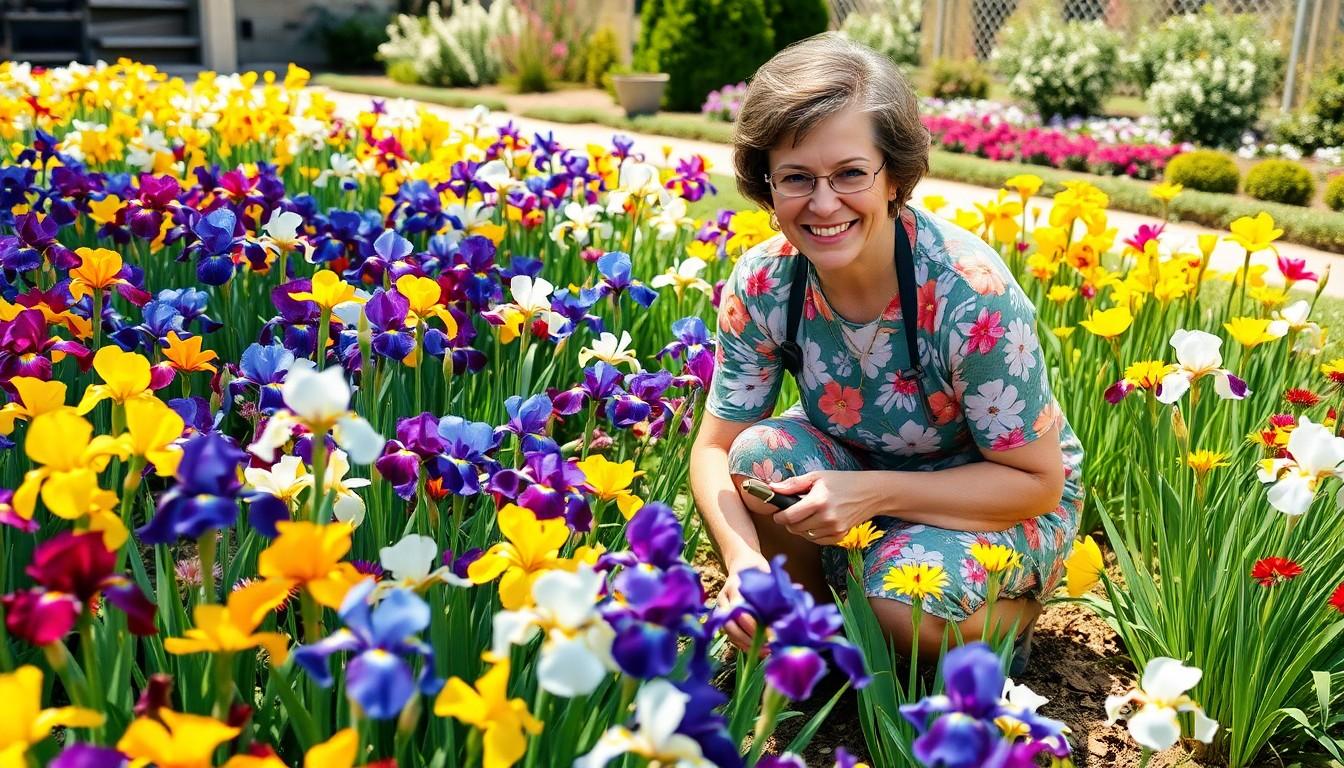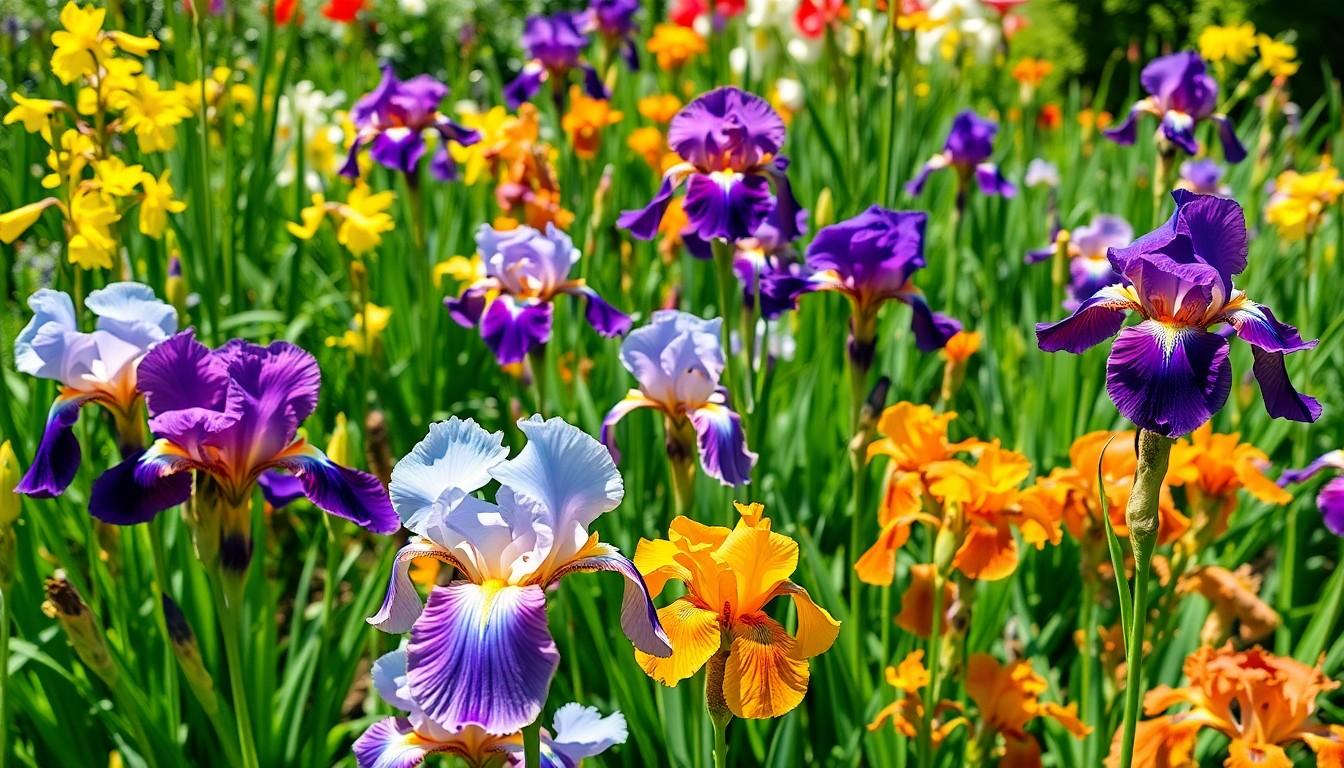Phone:
(701)814-6992
Physical address:
6296 Donnelly Plaza
Ratkeville, Bahamas.

Iris plants are the divas of the garden world, strutting their vibrant colors and elegant blooms like they own the place. But don’t let their beauty fool you; they’re not high maintenance. With a little know-how, anyone can keep these floral showstoppers thriving. Whether you’re a seasoned gardener or just starting out, understanding iris plant care can turn your garden into a stunning masterpiece that even Mother Nature would envy.
Iris plants offer beauty and diversity, appealing to many garden enthusiasts. These perennial favorites include several species, like bearded and Siberian irises, each showcasing unique colors and forms. Tall garden irises exhibit large, frilled blooms alongside shorter varieties, adding depth to floral displays.
Color options range from rich blues and purples to yellows and whites, making them suitable for various garden themes. Planting irises provides numerous benefits, such as attracting pollinators like bees and butterflies, enhancing the ecosystem. They thrive in well-drained soil, preferring sunlight for optimal growth.
Maintenance remains manageable, primarily focusing on proper watering, fertilization, and occasional division. Seasonal care involves deadheading spent blooms for continued flowering and monitoring for pests that may affect their health. Dividing clumps every three to five years rejuvenates growth and expands the planting beds.
Iris plants flourish in USDA zones 3 to 10, accommodating different climates across regions. While drought-tolerant once established, they benefit from regular watering during dry spells. Choosing the right location and companions enhances their growth, while spacing allows for air circulation, minimizing disease risk.
Gardeners appreciate irises for their resilience and ease of care. These plants serve as excellent focal points or borders, providing visual interest. Understanding the specific needs, such as light and soil type, leads to flourishing plant health and vibrant blooms.

Selecting an ideal iris variety enhances garden aesthetics and ensures successful growth. Many options exist, each presenting unique characteristics and requirements.
Bearded irises are popular for their frilled petals and wide color range. Siberian irises thrive in moist conditions and produce elegant, slender flowers. Dwarf varieties, such as mini irises, excel in small gardens or containers. Japanese irises feature large blooms and prefer wetter soil, making them suitable for bog gardens. Each variety offers distinct beauty, providing gardeners with diverse choices.
Consider climate before selecting iris varieties, as some types thrive better in specific USDA zones. Soil drainage plays a crucial role; well-drained soil is essential for healthy roots. Sunlight exposure impacts flowering; most iris plants prefer full sun to partial shade. Bloom time varies by species, which can influence garden planning. Lastly, companion plants should complement irises, allowing for an engaging and harmonious garden design.
Planting irises involves some key considerations to ensure healthy growth and vibrant blooms. Careful attention to timing and soil conditions significantly enhances success.
Spring serves as the best time for planting irises. As the frost subsides, choosing a date between March and May ensures optimal conditions for growth. Newly planted irises establish roots well during this warm period. Late summer to early fall also works well, allowing plants to settle before winter. Timing plays a crucial role in the development of robust blooms, so gardeners should prioritize spring planting when starting new iris beds.
Iris plants thrive in well-drained soil, essential for their health. Sandy loam or slightly acidic soil serves as an ideal medium, promoting proper drainage. Nutrient-rich soil fosters growth, while too much moisture can lead to rot. Before planting, amendments like compost enhance soil fertility, contributing to successful iris development. Testing the soil pH helps determine its suitability, with a range of 6.0 to 7.0 being optimal. Ensuring proper soil conditions greatly influences the overall vigor of the iris plants, leading to stunning floral displays.
Iris plants thrive with proper watering and fertilization techniques. Understanding these practices leads to healthier plants and more vibrant blooms.
Water routinely during dry periods, especially right after planting. Soil should remain consistently moist but never waterlogged. Monitor conditions closely; established plants often tolerate dryness, but young irises require regular moisture. Direct water at the base rather than on the foliage to prevent fungal diseases. Early morning watering minimizes evaporation, ensuring better absorption by roots.
Fertilize irises with a balanced fertilizer during the growing season. A 10-10-10 NPK formula works well, providing essential nutrients. Apply the fertilizer in early spring as new growth appears and again after blooming. Avoid over-fertilization, which can weaken plants and promote excessive leaf growth over flowers. Organic options, such as compost or well-rotted manure, enrich soil while supporting long-term health. Regularly testing soil helps determine additional nutrient needs for optimal growth.
Iris plants require attention to pests and diseases for optimal health and beauty. Managing these factors ensures vibrant blooms and robust growth.
Aphids are known for infesting new growth, sucking sap and weakening plants. Iris borers cause significant damage, as larvae tunnel into the rhizomes and can lead to plant decline. Spider mites thrive in hot, dry conditions and create webbing, signaling stress on the iris foliage. Additionally, slugs and snails may feed on leaves, especially in humid environments. Recognizing these pests early allows for effective intervention.
Monitoring plants regularly helps catch infestations before they escalate. Introducing beneficial insects like ladybugs supports natural pest control. Neem oil application provides a safe remedy against various pests when used as directed. Barrier methods, such as copper tape, deter slugs and snails. Maintaining healthy plant vigor through proper watering and fertilization reduces susceptibility to pests and diseases. Regularly clearing debris around plants enhances airflow, minimizing disease risk.
Caring for iris plants can be a rewarding experience that brings vibrant colors and life to any garden. By understanding their specific needs and providing the right conditions, gardeners can enjoy stunning blooms year after year.
With proper watering, fertilization, and pest management, irises will thrive and become beautiful focal points in the landscape. Choosing the right variety and location ensures a harmonious garden design while attracting beneficial pollinators.
Whether a seasoned gardener or just starting out, embracing iris plant care can lead to a flourishing garden filled with elegance and charm.